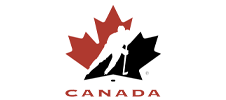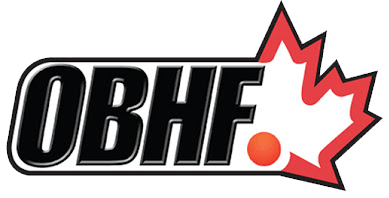playing rules – interference & protection of the goaltender

Rule 66. Interference/Protection of the Goaltender
(a) A Minor penalty for Interference or, at the discretion of the Referee, a Major penalty and a Game Misconduct penalty shall be assessed any player who:
(1) interferes with or impedes the progress of an opponent who is not in possession of the ball, or
(2) deliberately knocks a stick out of an opponent’s hand, or
(3) prevents an opponent who has lost or dropped his stick from regaining possession of it.
Note 1: The last player to touch the ball – other than the goaltender – shall be considered the player in possession.
Note 2: Often the action and movement of the attacking player causes the interference, since the defending players are entitled to “stand their ground” or “shadow” the attacking players. Players of the side in possession of the ball shall not be allowed to “run” deliberate interference for the ball carrier.
Note 3: Forcefully knocking the stick out of an opponent’s hand with the stick should be assessed as slashing rather than interference.
(b) A Minor penalty for Interference with the goaltender shall be imposed on a player who, by means of his stick or his body, interferes with or impedes the movements of the goaltender by actual physical contact. The penalty should be announced as “Interference with the Goaltender”.
Note: A goaltender is not “fair game” just because he is outside the goal crease. A penalty for Interference (Minor or, at the discretion of the Referee, a Major penalty and a Game Misconduct penalty) or Charging (Minor or, at the discretion of the Referee, Major penalty and a Game Misconduct penalty) shall be called where an opposing player makes unnecessary contact with the goaltender. Likewise, Referees should be alert to penalize goaltenders for Tripping, Slashing, or Spearing in the vicinity of the goal.
Unless the ball is in the goal crease area, a player of the attacking side may not stand in the goal crease. If an attacking player deliberately stands in the goal crease, without interfering with the goaltender, the Referees shall stop the play and the ensuing face-off shall take please at the nearest face-off stop in the neutral zone. If the ball should enter the net while such conditions prevail the goal shall not be allowed. If an attacking player has physically interfered with the goaltender, prior to or during the scoring of the goal, the goal will be disallowed and a penalty for “Interference with the Goaltender” will be assessed and announced.
The ensuing face-off shall be taken in the neutral zone, at the face-off spot nearest the attacking zone of the offending team.
If a player of the attacking team has been physically interfered with by the actions of any defending player so as to cause him to be in the goal crease and the ball should enter the net while the player so interfered with is still in the goal crease, the goal shall be allowed. A Minor penalty shall be assessed to an attacking player, who while his team has possession of the ball, is interfered with by a defending player, but fails to attempt to avoid making contact with the goaltender. In addition, if a goal is scored it shall be disallowed.
A Minor penalty shall be imposed on an attacking player, not in possession of the ball, who is tripped or caused to fall and fails to attempt to avoid contact with the goaltender whether he is in or out of his crease.
A Minor penalty shall be imposed on any attacking player, who makes deliberate contact with a goaltender whether in or out of the goal crease.
At the discretion of the Referee a Major penalty and a Game Misconduct penalty may be imposed under Rule 52 (b) – Charging or Rule 54 (c) – Cross-Checking. In the event that a goaltender has been pushed into the net together with the ball after making a stop, the goal will be disallowed. If applicable, the appropriate penalties will be assessed.
(c) Where a stick or any object is thrown on the floor from the players’ or penalty bench or where a player on the floor is interfered with by an opposing player or team official on the players’ or penalty bench, (whether or not play is in progress), a Bench Minor penalty shall be assessed to that team if the Referee is unable to identify the person responsible, except as covered in Rule 36 (a)(4) – Awarded Goals and Rule 85 (d) – Tripping. If a goal is scored, no Bench Minor penalty would be assessed.
(d) Where a stick or any object is thrown on the floor from the players’ or penalty bench or where a player on the floor is interfered with by an opposing player or team official on the players’ or penalty bench (whether or not play is in progress) and the Referee is able to identify the person responsible; that person shall be assessed a Bench Minor penalty and a Game Misconduct penalty. When Rule 36 (a)(4) – Awarded Goals or Rule 85 (d) – Tripping are applied, the Bench Minor penalty would not apply but the Game Misconduct penalty would.
(e) A Major penalty and a Game Misconduct penalty shall be assessed any player who injures an opponent by “interference”.
(f) A Minor penalty shall be assessed a goaltender who deliberately places obstacles at or near his net which, in the Referee’s opinion, would tend to prevent a goal from being scored.
A Penalty Shot shall be awarded to the non-offending team if, in the Referee’s opinion, such object or obstacle actually prevents a goal while the offending team’s goaltender is legally on the surface. If a Penalty Shot is awarded under this rule, the Minor Penalty shall not be assessed.
A goal shall be awarded if, in the opinion of the Referee, such object or obstacle actually prevents a goal after the offending goaltender has been legally substituted for by another player.



Ontario Ball Hockey Federation © 2021

